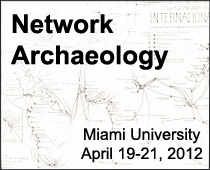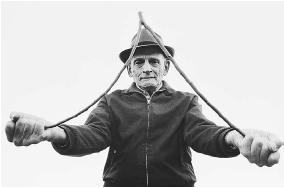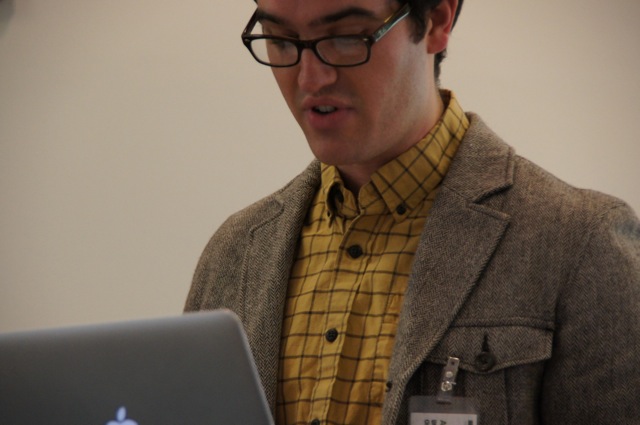Presentation by Alex M. Ingersoll (University of North Carolina, Chapel Hill).
Locative media and augmented reality applications are part of an increasingly popular group of digital technologies that determine a user’s or object’s physical, geographical position and then provide an interface that adapts with changes in geographic information. Importantly, when combined with the code of the computer and a network connection, locative media encompass a range of technological, bodily, spatial, and cultural components that are not completely unique to contemporary orientation technologies. With this paper, I argue that the marginalized history of divining or dowsing rods can be productively linked to a deeper historical constellation of which locative media are the latest manifestation. Users of the divining rod argue that it serves as a navigational medium between the body and electrical or magnetic forces flowing throughout the natural environment while others claim that the rod connects them to an invisible “network on the surface of the earth” described as an “earth force” which is “the balancing principle which keeps all nature in equilibrium.” Indeed, the “miracle of dowsing” is purported to allow the operator to see “what lies beyond space.” An archaeological approach to locative media allows me to take into account forgotten continuities with the diving rod, which as an orientation and navigation technology, has often been disarticulated from contemporary network technologies because of its purported irrational or supernatural desires. These are longstanding desires to connect to im/material spatial networks and reveal the shifting and often contested linkages of the material and ideal with cultural and spatial imaginaries.
Alex M. Ingersoll is a Ph.D. candidate in the Department of Communication Studies at the University of North Carolina, Chapel Hill. He researches media technology and space, and is particularly interested in the technologies of spatial representation, orientation, and navigation. He is currently writing a dissertation on a historical constellation of orientation and navigation technologies as a way to analyze their contributions to the social imaginations of space.





Pingback: Sorting Network Artifacts, Part 2 | Words in Space